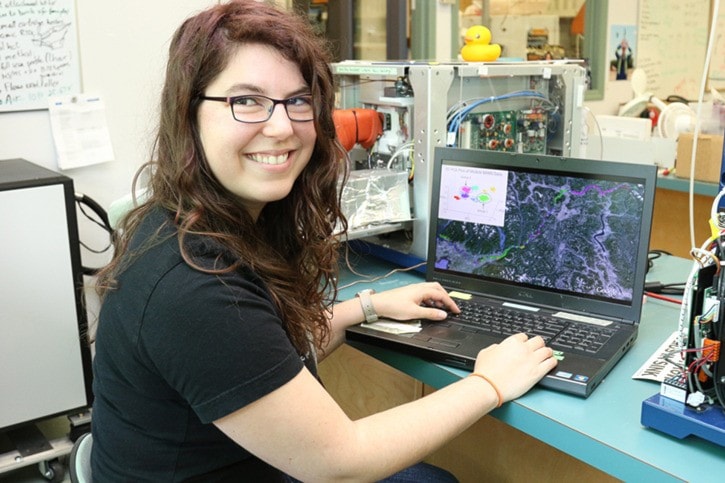By Glenn Drexhage
Vancouver Island University alumna Larissa Richards is spending her summer back at her alma mater, hard at work in Vancouver Island University’s Applied Environmental Research Laboratories. But the University of Victoria doctoral candidate did get a break from her schedule when she was asked to participate in a six-week course at the Copenhagen School of Chemometrics.
“I was definitely excited and thankful for the opportunity but it was no holiday,” said Richards with a laugh. “The program included 12 seminars that lasted anywhere from one to five full days in length.”
Richards was one of more than 60 students chosen to participate in the course from places as diverse as Bangladesh, Argentina, China and Sweden. The students came together in Copenhagen, Denmark where they were challenged on their own research and mentored by the most prolific chemometrics scientists from all over the world.
Chemometrics is an emerging area of study that involves the applications of mathematics, statistics, and computer science in solving chemistry problems. Richards, who attended Alberni District Secondary School, graduated VIU with a chemistry and math double minor which naturally led her to chemometrics.
Thanks to a partnership between UVic and VIU, Richards was able to launch her doctorate project under the supervision of UVic professor Tom Fyles and VIU chemistry professors Erik Krogh and Chris Gill in the AERL. Her project involves providing mobile, real-time monitoring of chemical components in the air using a modified mass spectrometer that is mounted in a van. She describes the mass spectrometer as a “very sensitive nose.”
“It can detect one or two molecules in a billion molecules of air. Our goal is to apply chemical forensic techniques to identify ‘fingerprints’ in the data in real-time while driving around, which is pretty cool,” said Richards. “For example, pine trees smell different than car exhaust because of the chemical composition of the molecules that are being released. This will help us answer questions like ‘what is the sample contaminated with?’ and ‘where did this contamination originate from?’”
At the end of the six-week course in Copenhagen students and professors got together to vote on which student gave the best presentation summarizing their research project. Richards presentation won, and she was awarded a certificate honouring the achievement, her tuition for the course was paid and she got three kilograms of chocolate, which she brought back to Canada to share with her labmates.
The state-of-the-art instrumentation Richards is using is part of a Canada Foundation for Innovation project to develop a mobile mass spectrometry laboratory at VIU. It will be used to determine how chemical compounds change over time and space. Krogh says Richards' work is being applied to air quality monitoring on Vancouver Island and the lower mainland with the support of the Fraser Basin Council through the B.C. Clean Air Research Fund.
“The work we’re doing to make on-the-fly measurements of trace contaminants in air from a moving vehicle is taking the technology we have and pushing it to its limits, and she is on the leading edge of this important research,” said Krogh.
Glenn Drexhage is a writer with VIU's communications department.
